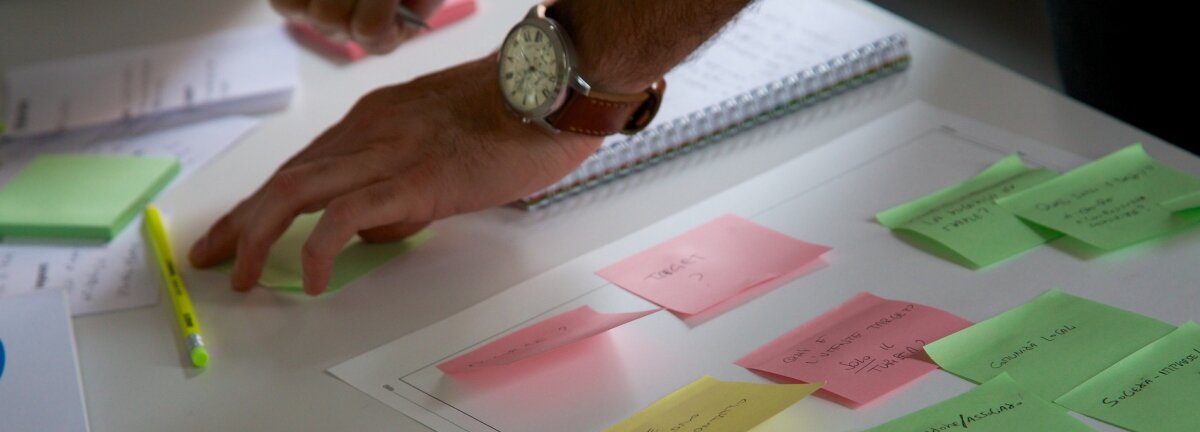Codesign: Where do you start as a policy maker?

Dr Nina Terrey is a Partner at ThinkPlace and a leading expert in how design can be applied to complex public sector challenges. ThinkPlace is Australia’s leading design firm working in the public sector. Nina is passionate about using design in the front end of policy making, looking for possibilities to use codesign to inform decision making. She holds a PhD in Management and is one of the contributors to a new book Design for Policy.
You might be someone who leads a policy team or someone who is responsible for generating innovative policy ideas. You may also be faced with changing expectations of how to engage stakeholders, which require you to move beyond consultation to codesign. But where do you start?
I work with public managers who face these questions and commonly ask ‘can we truly codesign?’ The challenge for most public managers is not an individual lack of will or motivation but lies in both setting up and being an active participant in the codesign process.
This is a particular challenge in a policy context because high levels of specialist knowledge are often coupled with traditional consultation and engagement methods. So where do you begin? Here I suggest three important criteria for codesign in the policy process.
1. Find the right people to lead a codesign effort
Selecting the right people in a codesign context should be based on asking “what is the policy area in question and have we thought about all the key actors in this area?” This requires us to go beyond the usual suspects and include people who live the everyday.
For example, during a policy project in community services we worked with a policy manager to identify the network of actors from across government, the non-government sector, the lobby sector and the families who seek the community services. The resulting network map allowed us to identify key people to invite into the project.
2. Establishing the right conditions for codesign work
Codesigning in a policy context means that all stakeholders identified in the network map are involved at the inception, design and implementation phases of work.
Usually the starting place for a policy project is a hypothesis or a question it might also be a proposed solution. But it is not uncommon for the intent of a policy to be unclear, or understood by only a small group of people.
The purpose of codesign is to check the validity of this starting point and to take the policy to the place it needs to go to – to achieve its original intent. Establishing the right conditions is crucial and in my experience the best way for this to occur is through a strategic conversation bringing stakeholders together at the very start of a project; at ThinkPlace we call this the ‘intent workshop’.
The intent workshop can be run in anything from two hours to two days and should reflect the scope and impact of the policy. It covers questions such as: Where are we now? Where do we need to be? Who is affected by this policy idea or change? And what do we need to do to codesign with them to ensure we scope and understand the policy potential?
At ThinkPlace we capture this conversation in a single page and use this document as a key reference point throughout the codesign project.
3. Selecting the best and most acceptable methods for your policy project
Methods used in codesign principally centre on understanding human experience both in the ‘current state’, and by exploring ‘future state’ possibilities. From here ideas can be tested or prototyped.
A conventional policy process is fairly rigid about the methods used to understand both current and future states; these tend to be static and involve the creation of models and scenarios underpinned by assumptions. Used alongside conventional methods codesign offers a more immediate opportunity to test the validity of policy intent and to explore the possible ways it can be realised.
I have found that the codesign methods need to be appropriate to a policy context particularly to political environments and show sensitivity to stakeholders.
For example, in the community services policy project we selected a small number of families and used codesign methods, ranging from in situ interviews to narratives of their everyday experiences. By analysing these stories we found patterns where their experiences fell down, or were lifted, this highlighted possibilities for change. We then went back to families and with blank paper used modelling, drawing and creativity activities to plan how we might address these areas for change. We created a narrative or blueprint of the codesign activities and showcased the people, the ideas which informed a further scaling of the ideas into final implementation (topics beyond the scope of this blog).
Making codesign happen requires expertise. In all of the above examples our team at ThinkPlace worked with policymakers. We brought skills, expertise in codesign. Recognising that policy needs others to be part of the process to enact codesign is key to making it work too.
Subscribe to our newsletter
Want to keep up with the latest from the Design Council?
